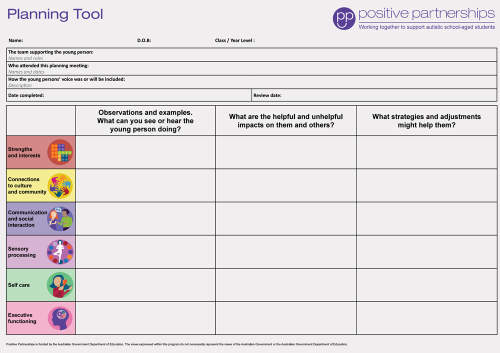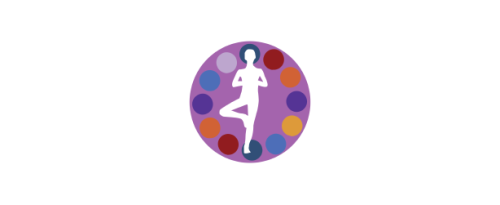Every young person is different. We need to get to know them to support them effectively.
Understanding some key areas related to autistic people's independence, strengths and support needs is important.
The Diversity Wheel
Autism used to be thought of as a linear spectrum, as represented here:

It is now known that autism is more diverse than this. Our knowledge about autism reflects an ongoing dialogue with the autistic community and research that continues to inform our understanding.
The Diversity Wheel is comprised of six areas that shape our everyday experiences. This was adapted from the 'wheel' by Rebecca Burgess, an autistic cartoonist.
Understanding the Diversity Wheel
Watch the Diversity Wheel animation below. It is a visual representation of a young person's fluctuating capacity across the different areas.
Fluctuating capacity is when a person’s ability to manage or participate can change over time or in different environments (e.g. home, school, community), depending on what’s happening around them and the supports they have. This can impact their level of self care, autonomy and choice and control across a day.
These changes can include things like:
who they are with
what they are doing
what they are feeling
the time of day
We acknowledge that many young people will have co-occurring conditions (e.g. autism and attention-deficit/hyperactivity disorder (ADHD), intellectual disability, anxiety) and they can impact as well.
The animation demonstrates the following:
- The outer edge of the circle represents times or situations where the young person is able to actively engage and make use of available supports.
- The inner section reflects times or situations where additional strategies and adjustments may be needed to support the young person.
Think about how this could apply to someone you know and support, and how different changes can impact them.
In collaboration with our First Nations Reference Group, we've created unique versions of our Diversity Wheel and Planning Tool for First Nations communities. We call these the My Child's Story Circle and My Child's Storyboard. You can access these resources through the link below.
Planning Tool
Our Planning Tool relates to the Diversity Wheel. This tool captures relevant information about a young person, including their strengths and support needs as well as strategies and adjustments.
You can complete the Planning Tool with people who support them, including parents, educators and themselves.
The observations and examples column is for you to record exactly what you see or hear the young person doing. Examples:
- how do they communicate?
- How do they interact with family and peers?
- How do they best learn new things?
The helpful and unhelpful impacts column is where you can record the impacts of those observations on them and those around them.
The strategies and adjustments column records what might be in place to support them and what may help.
The Planning Tool is available for you to access in several languages. Follow the link below to learn more.
Strengths and Interests
All young people have individual strengths, interests and preferences for different activities. Autistic students can be highly focused or passionate about their interests. Strengths and interests can change over time, with some interests lasting only a few weeks and others lasting many years.
Connections to Culture and Community
Connections to community and culture can significantly support well-being and quality of life. Every young person is connected in different ways to the people, places, and cultural contexts that are part of their lives. Think about these connections and how they impact the young person.
Communication and Social Interaction
Young autistic people will have varying strengths and support needs with communication and social interaction. These strengths and support needs will vary between people over time and may depend on the context they are in.
Sensory Processing
Sensory processing relates to the way our brain receives, organises and responds to sensory input from the world around us and from our internal body signals. This helps us think and behave in a meaningful and planned manner. Autistic young people may experience sensory information in a range of ways.
Self Care
Self-care activities can include dressing, brushing teeth, eating, showering, etc. Many self-care activities require a range of abilities, including fine and gross motor, hand-eye coordination, sensory processing, and executive functions. All people can experience autonomy, choice, and control, including those with high support needs.
Executive Functioning
Executive functions are performed by our brain to help us to control and manage our thoughts and actions. These include being able to organise and plan, shift attention, be flexible with thinking and self-regulate, which can all have an impact on how a young person copes with daily tasks.
Webinar
Click on the video to view a webinar recording of how to use the Planning Tool.
To explore more content related to supporting students, click through to our Practical Tools and Information Sheets page.











